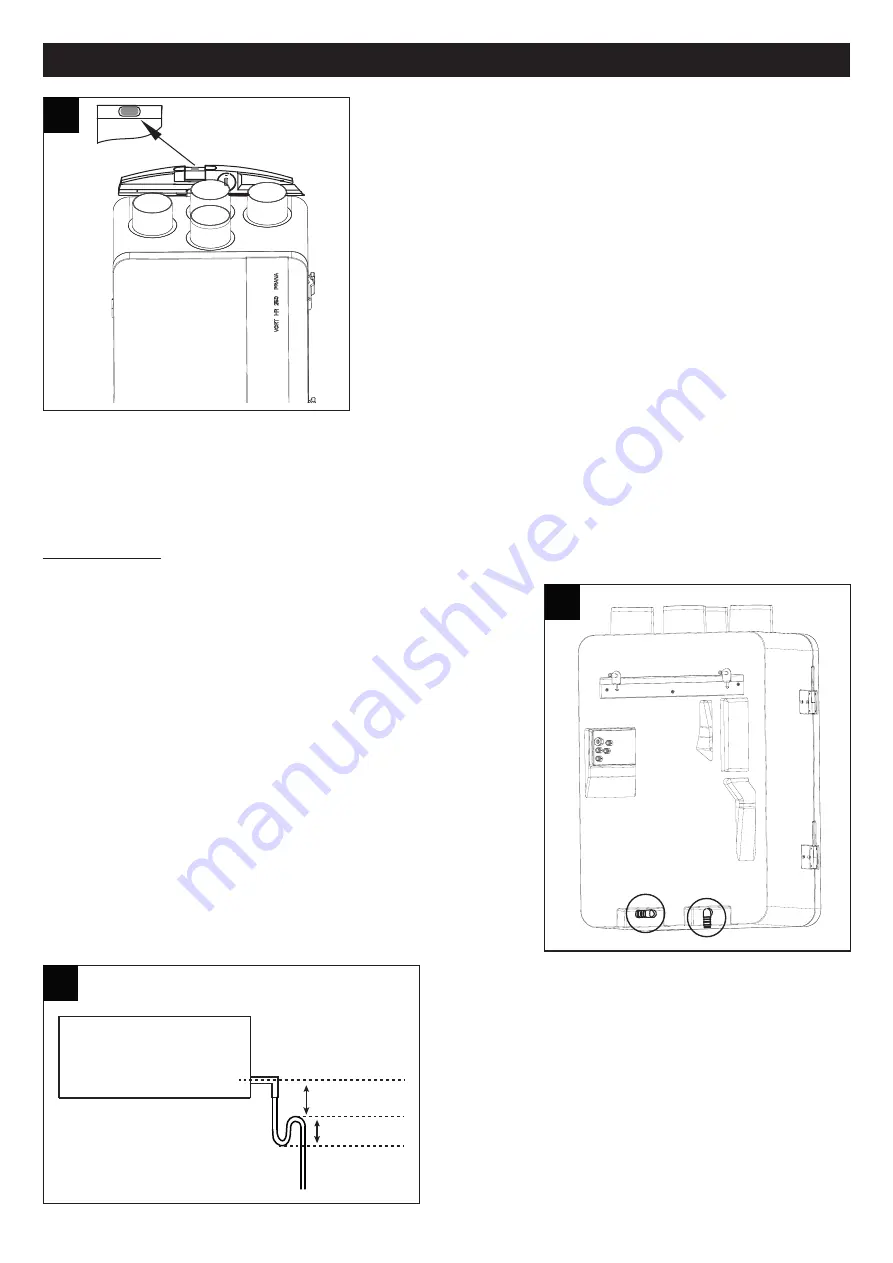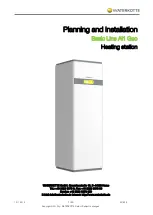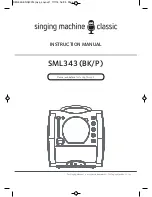
17
Make sure that the appliance is level in order to ensure faultless operation.
The ducts used for conveying air must be of the correct size. The ducts to and from the outdoors must be thermally
insulated and not subject to vibration. The 125 mm standard diameter inlet and outlet ducts must be secured to the
corresponding ports of the appliance by means of clips or other suitable fastening systems. If stale air is exhausted via the
roof, the outlet must be designed so as to prevent the formation of condensate and the entry of rain water. If fresh air enters
via the roof, the intake must be designed so as to prevent the formation of condensate and the entry of rain water.
Condensate drain
During normal operation, condensate collects at the bottom of the appliance in a double tray provided with two drain outlets.
The connection points are located at the back of the appliance, towards
the bottom. The condensate drain can be provided by connecting the
drain outlets to two flexible hoses with an internal diameter of 16 mm
approx. A siphon trap should be created to prevent air bubbles from
forming. Important instructions: winter operation: high probability of
condensate forming; drain hoses must be connected, with a siphon trap.
(Fig.8a) summer operation: probability of condensate forming; drain
hoses should be connected, with a siphon trap. (Fig.8b)
Cut the end of the hose obliquely
N.B.
The siphon must be created observing the dimensions
indicated in fig. 11, otherwise correct operation of the
appliance cannot be guaranteed. Condensate can also be
drained off through the waste plumbing system of the building.
ENGLISH
7
7
8
8
A
B
h > 50 mm
∆
≥ 60 mm
9
9
















































